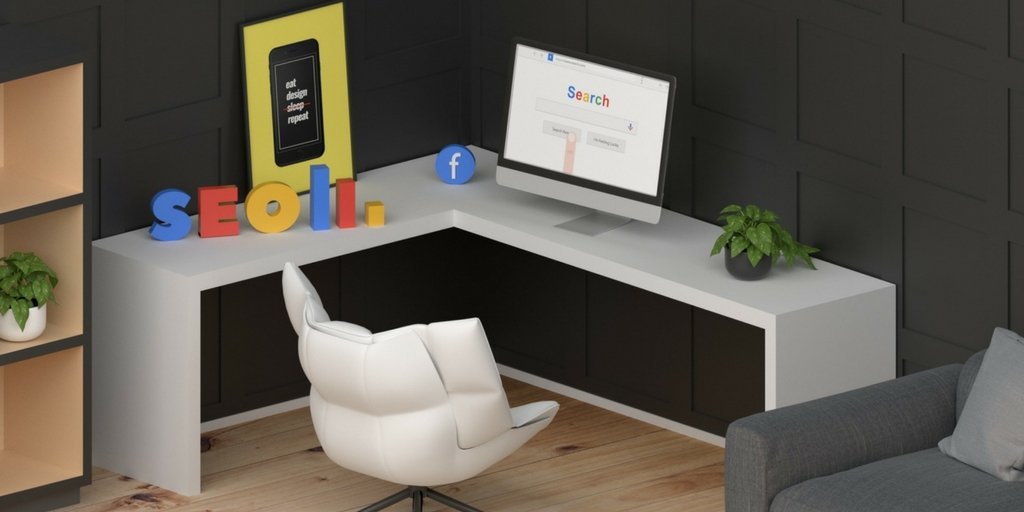It’s the early 21st century, where technological innovations happen very frequently, so most people think every business has a website. But that’s not the case, and even for those with a website, many commit common web design mistakes that can harm their online presence.
Having a Website Should Be Non-negotiable
As unfathomable as it sounds, 35% of small businesses don’t feel their operation is large enough to warrant having a website. But no matter how small your venture is, we’re in a technological era in which all businesses should not only have a site but meet a standard of quality that is constantly evolving.
89% of online consumers would rather take their business elsewhere after just one poor user experience. The sheer level of competition for functional and attractive websites should be enough to prompt your small business into making user-centered design a top priority.
Further, as much as 75% of users form an opinion of your brand based on the aesthetics presented in web design. Through it, your clients determine how they will perceive your brand and whether or not they will return for more.
As a small business, you have more to prove to both the world and your competitors.
Fortunately, because of how quickly design trends and standards are evolving, there is a copious amount of research already done for you. This ensures that you don’t have to make the mistakes that so many before you did.
Here are the top 12 commonly made web design mistakes for small businesses in 2021:
1. Not Using Data Analytics
The best way to understand what your site visitors want is to use data analytics.
Tools like Google Analytics allow you access to the journeys users are making across your site. Therefore, they provide you with valuable information about how to meet your consumer’s demands best.
Analytics can tell you how long visitors spend on your website, which pages are most popular, and whether or not visitors are using your site features as intended.
2. Vague Target Market
It might seem like a smart move to advertise your services to anyone and everyone. But realistically, you should put all your energy and focus into pleasing those who are likely to do business with you.
Some websites are bubbly and fun; others are chic and minimal. Don’t waste your time and resources trying to please all customer types. Instead, decide what kind of customers you want to attract and focus on catering to their needs exclusively.
3. Too Little or Too Much
One of the most common design flaws is either an overly crowded layout or a skeletal one.
Finding the balance between chaos and vacancy will give your brand a healthy, experienced appeal and be much easier on the eye. Visitors will not have a problem leaving your site if they are under or overwhelmed by what they are looking at.
4. Unclear CTA (Call To Action)
When setting up a website for your small business, you need to have an abundantly clear and concise call to action.
From your businesses’ perspective, what is the ideal end goal for an online visitor? Whatever it is, you can’t expect them to get there if you haven’t made your objectives clear.
Whether you want them to purchase something, click a link, install your software or subscribe to your newsletter or services—the ability for users to select that option needs to be bold, obvious, and within easy reach.
5. Over or Underrepresented Social Media Links
The links to your social media platforms should be neither too obvious nor too concealed. While first and foremost, your social media links need to be active and present within your website design layout. They should not overpower your website as a whole.
Unnecessarily bold or prominent social media links will drive online traffic away from your website and onto those platforms instead.
6. Generic Fonts and Imagery
There are few things less off-putting to a consumer than outdated or low-resolution fonts and imagery.
Many companies use standardized fonts for their text blocks. But going the extra mile and finding a font that more accurately depicts your brand will show users that you are professional and on-trend.
Blurry, generic, or otherwise unappealing images on your website automatically translate badly to visitors. There’s nothing wrong with using stock photos, but make sure they are high resolution and your competitors are not using them.
7. Poor UX (User Experience) Design
The role of UX is becoming increasingly vital to the process of structuring a website’s layout.
UX asks, “how do the users within my target market behave?” and then creates a design that best matches the natural trajectory of your most typical consumers. Is the newsletter sign-up button visible enough? Are your products displayed in areas users are likely to visit?
If your website does not consider how usable the site is, visitors will become frustrated and stuck—ultimately leading to them exiting your page and opening someone else’s.
8. Unanswered Questions
The last thing you want your website to be is confusing. So before publishing your site, consider deeply what the core pieces of information are that potential customers would need to make a decision and make that information readily available.
Location, products, prices, ethos, contact details, basic FAQ—people have questions, and you need to answer them if you want your business to do well.
9. Irrelevant Content
Many businesses use the power of SEO (Search Engine Optimisation) articles and blogs filled with related content to bulk up their online traffic and create more reasons for visitors to stay on site.
Driving a staggering 1000% more traffic than organic social media, SEO is an extremely useful tool in boosting online traffic and marketing.
But if the content itself is not relevant to your website, users will quickly lose interest. Stock up on the content, but make sure it stays relevant and on-topic.
10. Keyword Underutilization
Keywords are popularly searched for words or phrases that SEO writers or content creators intentionally weave into content to attract more page visitors. So if you are not adding keywords to your website content, you are severely underutilizing a major asset.
Also worth noting is that one study by Ahrefs revealed that 60.67 percent of all search demand is generated by 0.16 percent of the most popular keywords (1001 or more search volume). That means you shouldn’t ignore those popular terms but ensure you’re also targeting long-tail keywords.
11. Site Buffering or Slowness
Nothing kills a website’s credibility like slowness, and it’s the biggest reason for exit clicks. It’s no secret that slow-loading websites cost online businesses money. After all, 40 percent of consumers will abandon a site after three seconds if it doesn’t load.
That means your website is on the outs if it takes even one second longer. A good chunk of your input into site development should always revolve around loading speed.
12. Non-Mobile Friendly Design
There is an overwhelming amount of data available about mobile design. As a small business in a big world, your strength lies in being innovative and future-minded, and including a mobile-friendly design into your site is one way to do that.
Studies show that 74% of online consumers are more likely to return to mobile-friendly sites. And more than 50% of all online traffic occurs due to mobile activity.
If your website doesn’t cater to mobile devices, many users will bypass it. So make sure to incorporate mobile-friendly site design, and your business is already on the path to success.
In a nutshell, user experience is an integral part of the customer journey. If your business website fails to deliver, it will reflect on your bottom line.
About the author
Nina Sharpe is a content champion for various outlets, covering various business topics from finance for startups to small business accounting tips. If you’d like to reach out to her for content collaborations, send a message to nina@ninasharpe.me.

This content is from a contributor and may not represent the views of Tech Help Canada. All articles are reviewed by our editorial team for clarity and accuracy.
Want a heads-up once a week whenever a new article drops?







